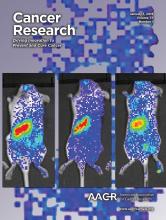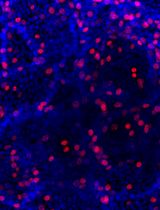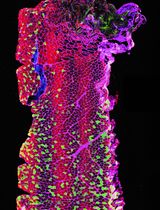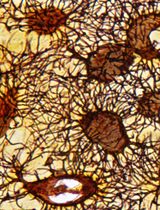- EN - English
- CN - 中文
A Novel Mouse Skin Graft Model of Vascular Tumors Driven by Akt1
由Akt1驱动的血管肿瘤的新型小鼠皮肤移植模型
发布: 2017年07月05日第7卷第13期 DOI: 10.21769/BioProtoc.2369 浏览次数: 11400
评审: Anonymous reviewer(s)
Abstract
To investigate whether endothelial Akt1 activation is sufficient to induce vascular tumor formation in the skin, we have developed a skin graft model in which a skin fragment from transgenic donor mice with inducible and endothelial cell-specific overexpression of activated Akt1 (myrAkt1) is grafted into the skin of wild type recipient mice. The donor skin successfully engrafts after two weeks and, more importantly, vascular tumor develops at the site of transgenic skin graft when myrAkt1 expression is turned on. This skin graft model is a novel approach to investigate the biological impact of a key signal transduction molecule in a temporal, localized and organ-specific manner.
Keywords: Vascular tumors (血管肿瘤)Background
Our research focuses on investigating the role of Akt1 in vascular tumor development. To determine whether the activation of Akt1 in endothelial cells is sufficient to drive de novo vascular tumor formation, we have developed and published a skin graft model of vascular tumor (Phung et al., 2015). We developed the current protocol of grafting skin from transgenic mice onto the skin of wild type mice because this is a way to study the localized and skin-specific effects of the overexpression of constitutively active Akt1 in the vasculature. We have observed that overexpression of Akt1 in the systemic vasculature leads to generalized edema in the lungs and skin, resulting in premature death of transgenic animals within days due to massive pulmonary edema. A procedure to graft transgenic skin onto wild type host mouse allows one to examine the long-term effects of Akt1 overexpression in only the transgenic skin vasculature without the lethality associated with systemic Akt1 overexpression. In our studies, we are particularly interested in investigating the long-term effects of Akt1 in the skin vasculature on the development of vascular tumors based on the hypothesis that hyperactivation of Akt1 in endothelial cells is sufficient to induce vascular tumor formation, thus demonstrating the endothelial cell-autonomous effects of Akt1 in these tumors.
In the model, skin from double transgenic mice with inducible expression of activated Akt1 (myrAkt1) in endothelial cells is grafted onto the back of immunodeficient nu/nu recipient mice. Since myrAkt1 expression is inducible, we can turn off myrAkt1 expression at will by giving the animals tetracycline in their drinking water, and we can turn on myrAkt1 expression by removing tetracycline from the water. A detailed description of the myrAkt1 double transgenic mice has been published (Sun et al., 2005). A schematic of the construction of these mice is shown (Figure 1). Using the skin graft model, we were able to demonstrate that expression of myrAkt1 in endothelial cells is sufficient for the development of vascular tumor. The procedural steps of this model are described below. 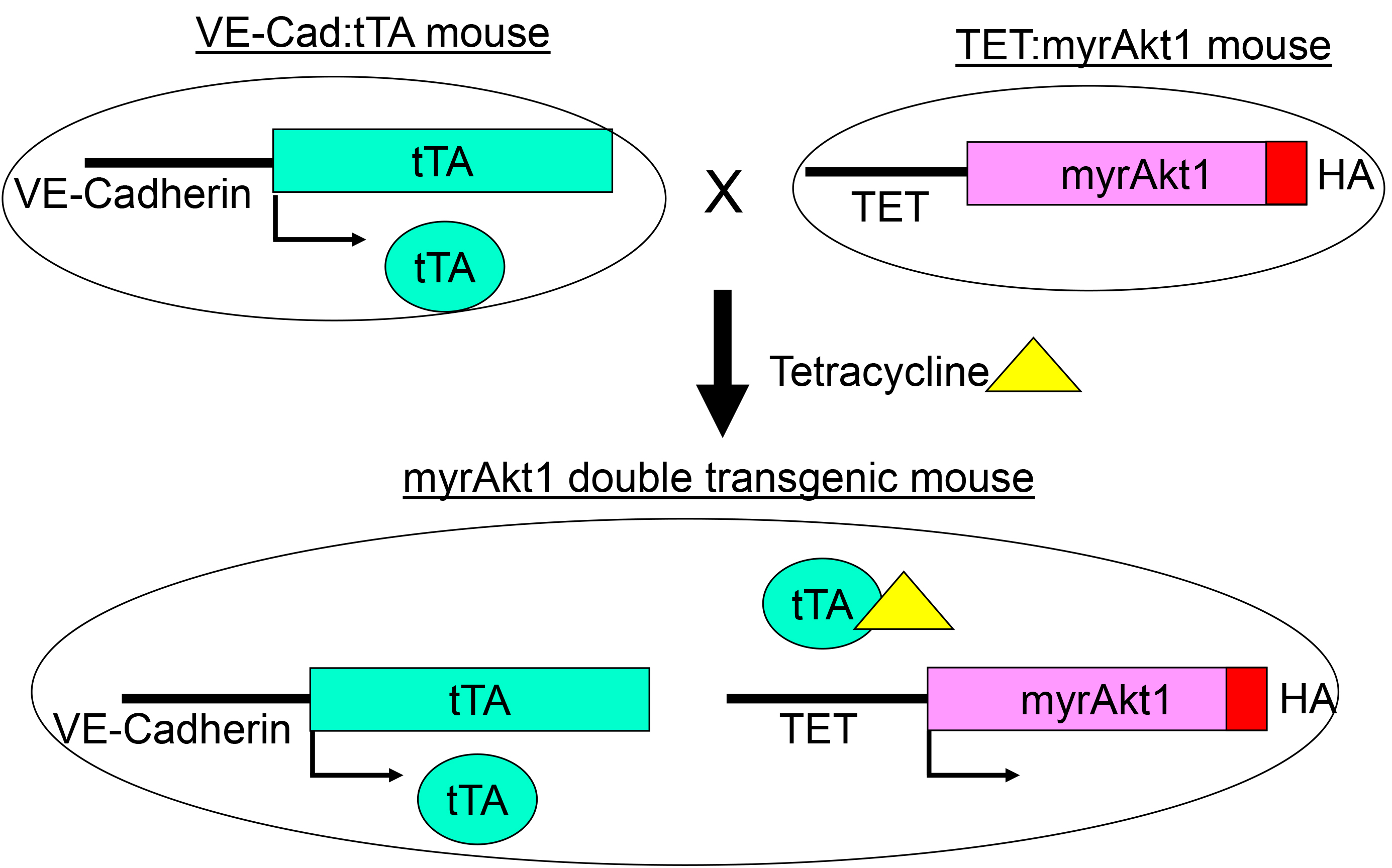
Figure 1. myrAkt1 double transgenic mouse model. The VE-Cad:tTA mouse line contains the VE-cadherin promoter cloned upstream of the tetracycline-regulated transcriptional activator (tTA) gene. VE-cadherin promoter is mainly active in endothelial cells. The TET:myrAkt1 line carries a constitutively activated Akt1 with an HA tag (myrAk1) under the control of the tetracycline responsive promoter (TET). To suppress myrAkt1 expression in the double transgenic mice, 1.5 mg/ml tetracycline with 5% sucrose is given to the mice in their drinking water. To turn on myrAkt1 expression, the mice are given pure water without tetracycline. In this system, double transgenic mice express myrAkt1 in endothelial cells, and the expression of myrAkt1 can be regulated with tetracycline (Reference: Sun JF, Phung T, Shiojima I, Felske T, Upalakalin JN, Feng D, Kornaga T, Dor T, Dvorak AM, Walsh K, Benjamin LE. Microvascular patterning is controlled by fine-tuning the Akt signal. Proc Natl Acad Sci USA 2005; 02: 128-33).
Materials and Reagents
- Sterile surgical gloves
- 10 mm skin punch biopsy instrument (Acu-Punch Biopsy Punch 10 mm) (Acuderm, catalog number: P1025 ) (Figure 2)
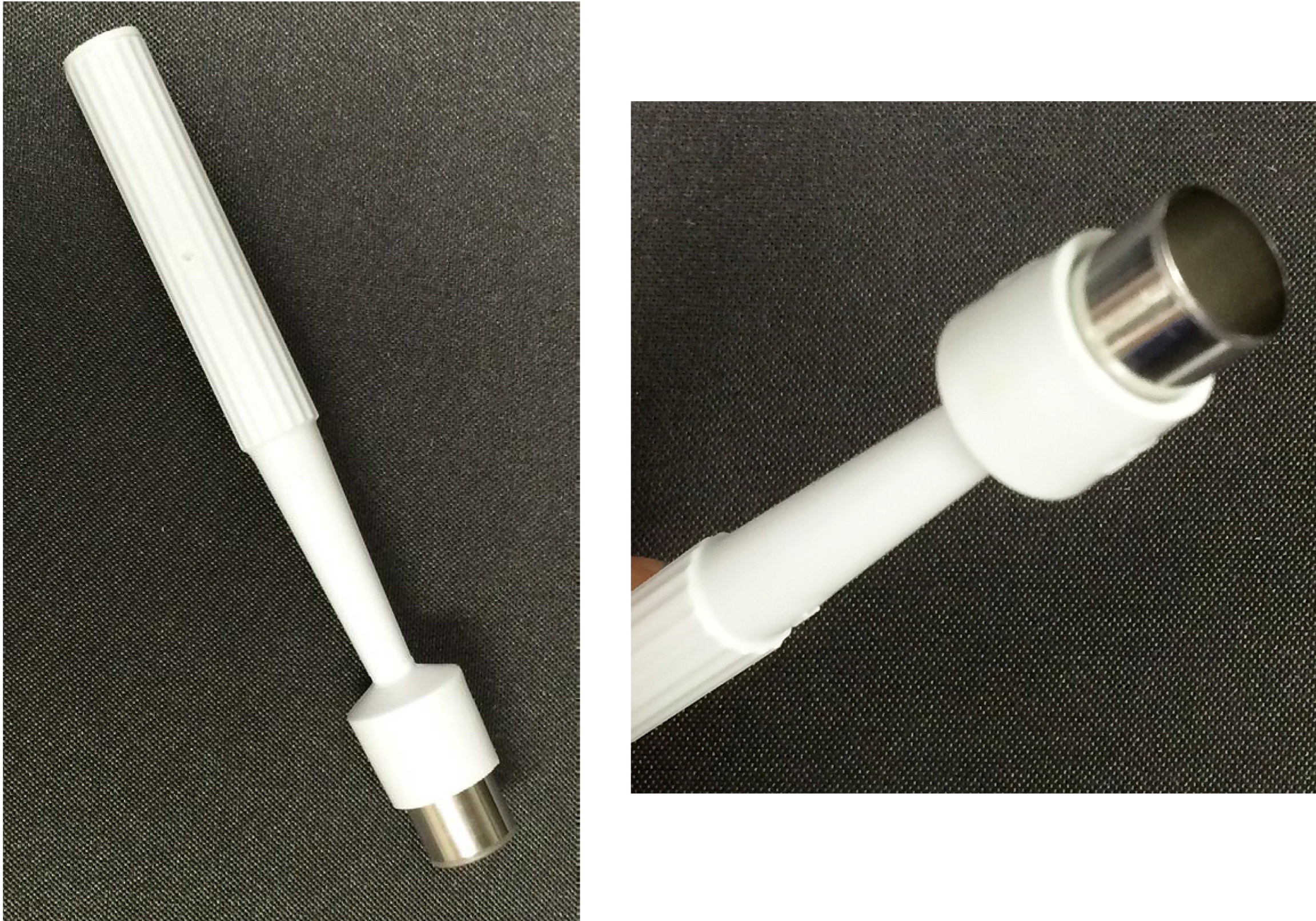
Figure 2. A 10-mm punch biopsy instrument - Ethilon non-absorbable nylon suture, 5-0 PC-3 (Ethicon, catalog number: 1965G )
- Sterile surgical towel drape (Steri-Drape) (3M, catalog number: 1010 )
- Sterile surgical gauze (4 x 4 Gauze 8 Ply) (COVIDIEN, DermaceaTM, catalog number: 441001 )
- Alcohol pads (WebCol Alcohol Prep) (COVIDIEN, catalog number: 6818 )
- Donor mice (females, 6-8 weeks old transgenic mice, see reference for the generation of transgenic mice: Sun JF, Phung T, Shiojima I, Felske T, Upalakalin JN, Feng D, Kornaga T, Dor T, Dvorak AM, Walsh K, Benjamin LE. Microvascular patterning is controlled by fine-tuning the Akt signal. Proc Natl Acad Sci U S A 2005; 102: 128-33)
- Recipient mice (females, 6-8 weeks old nu/nu mice from Charles River Laboratories, catalog number: 490 )
- Isoflurane (Sigma-Aldrich, catalog number: CDS019936 )
- Phosphate buffered saline (PBS), 1x sterile solution (AMRESCO, catalog number: K812 )
Equipment
- Needle holder (Halsey serrated jaws) (Roboz Surgical Instrument, catalog number: RS-7841 )
- Fine single-toothed forceps (Micro dissecting tweezers Pattern 7) (Roboz Surgical Instrument, catalog number: RS-5047 )
- Surgical scissors (Micro dissecting scissors) (Roboz Surgical Instrument, catalog number: RS-5910 )
- Electric hair shaver (Wahl Battery Operated Compact Travel Trimmer)
- Warming plate (Ala Science, catalog number: TCW220x120 )
Procedure
文章信息
版权信息
© 2017 The Authors; exclusive licensee Bio-protocol LLC.
如何引用
Phung, T. L. and Ayyaswamy, S. (2017). A Novel Mouse Skin Graft Model of Vascular Tumors Driven by Akt1. Bio-protocol 7(13): e2369. DOI: 10.21769/BioProtoc.2369.
分类
癌症生物学 > 通用技术 > 动物模型
细胞生物学 > 组织分析 > 组织成像
癌症生物学 > 通用技术 > 肿瘤形成
您对这篇实验方法有问题吗?
在此处发布您的问题,我们将邀请本文作者来回答。同时,我们会将您的问题发布到Bio-protocol Exchange,以便寻求社区成员的帮助。
Share
Bluesky
X
Copy link



